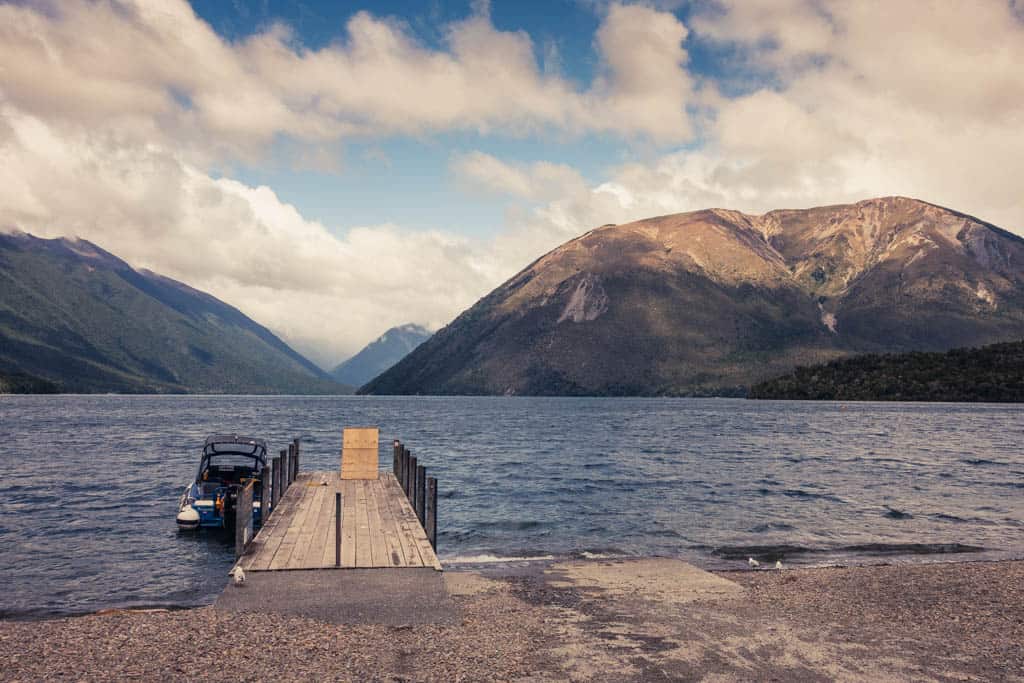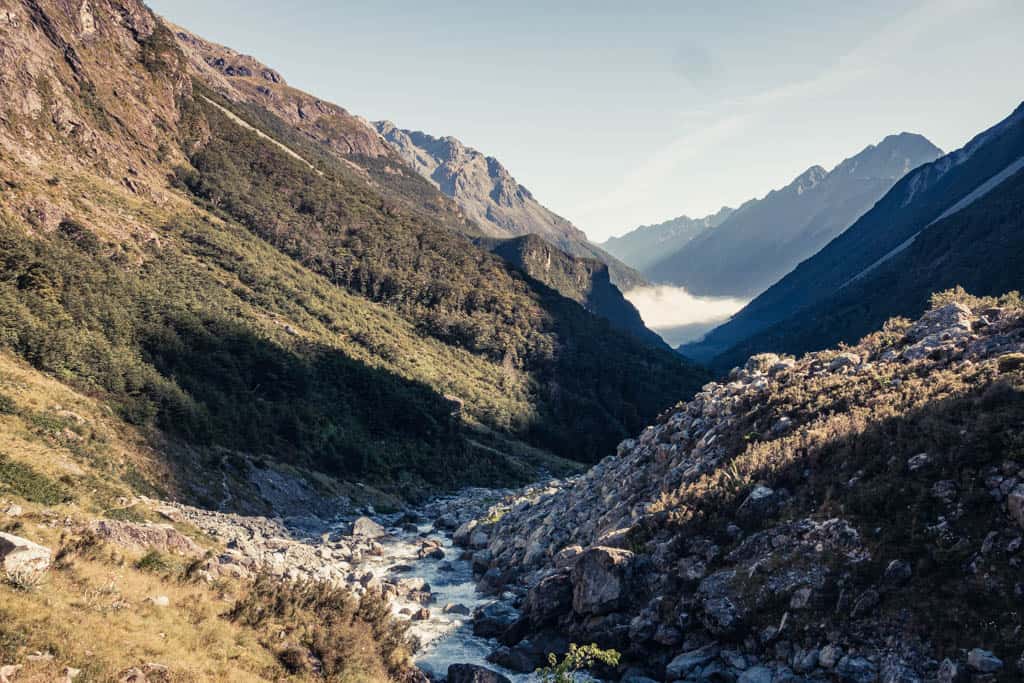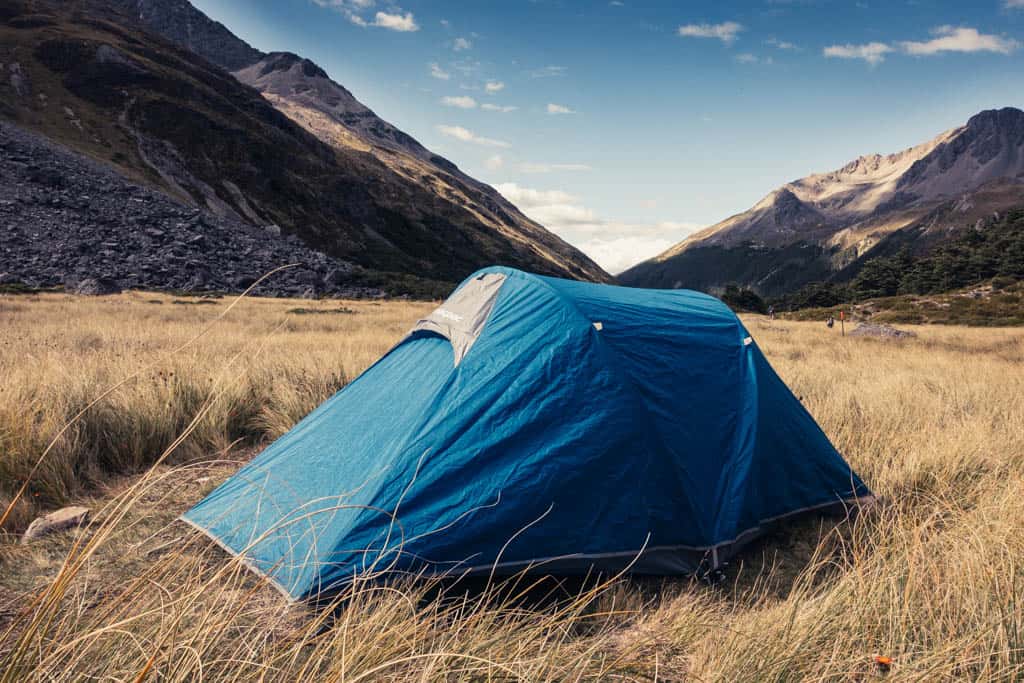Hike | Nelson Lakes National Park | New Zealand
Hiking the Travers-Sabine Circuit in Nelson Lakes NP
Text | Anninka Kraus
Photography | Tobias Kraus

New Zealand Tasman
The Travers-Sabine Circuit is often described as a popular yet less crowded alternative to New Zealand’s Great Walks. Its scenery is one of varied alpine wilderness that indeed measures up to the Great Walks: two river valleys – Traverse and Sabine – are densely cloaked in greenery and furrowed by alpine rivers, unbridged streams, and steep gullies.
Separating the two valleys is Travers Saddle, an alpine pass at almost 1800m, with wide, slippery scree slopes running down either side. The DOC suggests 4-7 days for this backcountry hike and we managed well in 4 days including a must-do side trip to Blue Lake, south of Sabine Hut.
It’s not a difficult walk but it helps to have moderate hiking experience in rugged and difficult terrain. The gentle opening stretch from Lakehead Hut, where the water taxi drops us off, towards Upper Travers Hut is very different to the rugged terrain further along the trek. If you notice yourself struggling on day one, you might want to turn back and pick a different trail, like the Lake Rotoiti Circuit.
related










Blue Lake – a remote sub-alpine lake located deep inside the national park, is proven to be the world’s clearest natural body of freshwater.
Nelson Lakes National Park | New Zealand
Hike | Loop trail | 4 days
track details.
Start/End: St Arnaud
Route: Lakehead Hut (water taxi from St Arnaud to Lakehead Hut) – Upper Travers Hut – Travers Saddle (1787m) – West Sabine Hut – Blue Lake Hut – Sabine Hut – Speargrass Hut – Mt Robert carpark – St Arnaud
Distance: day 1: 19.2km | day 2: 14.8km | day 3: 20.5km | day 4: 23.3km
Time: day 1: 6 hours | day 2: 7 hours | day 3: 7:30 hours | day 4: 7 hours
Elevation gain: day 1: 830m | day 2: 1070m | day 3: 220m | day 4: 890m
Elevation loss: day 1: 140m | day 2: 1180m | day 3: 950m | day 4: 1100m
Difficulty: moderate; requires hiking experience in rugged and difficult terrain
Best time to hike: summer months
Where to stay: There are six DOC huts on the Travers-Sabine Circuit, seven if you include the side trip to Blue Lake and Blue Lake Hut, and all operate on a ‘first come first served’ basis. At all huts there are also a couple of clearings to pitch a tent. If you don’t need access to hut facilities it’s also possible to wild camp in Nelson Lakes.
The only hut that requires advance booking is Angelus Hut and campsite in peak season (late November – April 30), outside this period, the hut operates on the same backcountry hut ticket system as all other huts in the park. With the TA now passing through Nelson Lakes, huts have become increasingly busy and you may want to carry a tent just in case.
Hut facilities include matrasses, longdrop toilets, water supply, handwashing and dishwashing facilities and heating with wood/fuel. We have planned our hike with the sandfly plague in mind and camp at a higher elevation the first two nights, at Upper Travers Hut (1320m) and Blue Lake Hut (1190m), and spend only the last night, for lack of other options, at a lower elevation at Sabine Hut (455m).
Food storage: it’s possible to send a food parcel to the Alpine Lodge for storage ($15)
Permits: Backcountry Hut Passes or Tickets are required to stay in all huts or campsites.
Further information: Official DOC information
At the far back of Travers Valley, Upper Travers Hut sits on the edge of a softly straw-coloured flat that spreads back to the eastern slope of Mount Travers and forward into the valley. On the flat, surrounded by tall tussocks and alpine grass peppered with orange wildflowers, there’s a little clearing just big enough for us to pitch our tent before the sun sets in the pale evening light.
Slowly, the mountain flattens to a dark unidimensional silhouette against the bluish night sky and the temperature drops to low double digits even on a fine day in mid-January.
Early morning, the temperature is cooler still and Travers Valley is settled under a heavy morning mist. We’re the last to set off, but quickly gain altitude on the relentless switchbacks over scree marked with snow poles and cairns. I usually enjoy uphills far more than downhills and this craggy mountain pass is no exception.
For one thing, I warm up quickly with the exercise in brilliant sunshine and peel out of several layers in quick succession just as the last wafts of morning mist still lingering in the valley evaporate; for another thing, the views are spectacular on the way up and culminate in a striking bird’s eye perspective of Sabine and Travers valleys when the trail tops out at 1781m Travers Saddle.
As suspected, the twisting descent across scree and through bush into Sabine Valley instead drags on endlessly and we’re glad for the company of two other couples, thru-hikers on the Te Araroa. Their backpacks are heavily laden with food for seven days on what is hiking day number 118 for them. They seem in good spirits, but I’m very glad that this, i.e. a thru-hiker, isn’t me anymore; two weeks on the TA have forever cured me of any thru-hiking ambition.
Today is one relentless up- and down-hill slog as it is, even with a lighter pack. We have just arrived on the valley floor at West Sabine Hut at 670m when the trail yet again ascents with the same tenacity over knobbly roots, broken rock, and unbridged streams as we’ve seen all day.
The drudgery is well rewarded at last when the dark, narrow bush path behind Blue Lake Hut spills onto the pebbly shore of Blue Lake/Lake Rotomairewhenua with its otherworldly blue-violet and green waters. According to NIWA (National Institute of Water and Atmospheric Research), this is the clearest natural freshwater lake in the world with underwater visibility of up to 80 meters.
Out of respect for the purity of the water and the people of Ngāti Apa ki te Rā Tō to whom this site is sacred, you’re asked to enjoy the lake with your eyes only. So, we sit on the lakeshore for an hour and just gaze at the water, mesmerized by its clarity and intense colours. A soft breeze blows slow ripples across the water surface and their shadows are mirrored as waves washing in unison across the pebbles at the bottom of the lake. Every pebble and every shadow is perfectly visible.
The next morning, we return to West Sabine Hut the same way and follow the Sabine River north to Sabine Hut on Lake Rotoroa. In hindsight, I’d have rather pushed on to St Arnaud, would have gladly braved a 14-hour hiking day, because camping at Sabine Hut is a complete disaster. There’s no other way to put it.
Don’t be deceived by the idyllic setting – the hut, nestled into the bush mere steps from the lake lapping gently against a small pebble beach – this seemingly perfect heaven is a ‘sandfly paradise’ as one fellow hiker had warned us.
During the daytime, the plague is mostly manageable when sitting at the far end of the jetty with a strong breeze blowing, but come sunset, when the wind dies down, the blood-thirsty monsters come in the thousands, literally. And no amount of DEED holds them at bay for long, believe me, I almost bathed myself in the stuff.
Consider yourself warned and don’t camp at Sabine Hut. The hut is your only option!
I set the alarm for 5:30 the next morning in a futile attempt to escape the beasts (surely, they must still be sleeping?!), and wake to the patter of raindrops on the fly sheet.
Only there’s no rain, but hundreds if not thousands of sandflies that have thirstily gathered between the inner tent and fly sheet. In their pre-breakfast excitement, they bounce off the sheet, imitating the sound of crackling rain, and are just waiting for us to crawl out of the tent. Which eventually we must. It’s safe to say we’ve never packed up this fast.
From Sabine Hut, the track climbs away from the lake towards a saddle, traverses wetlands on boardwalks and descending via Speargrass Hut through Speargrass Valley, returns to St Arnaud.










